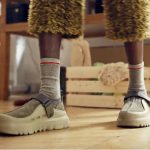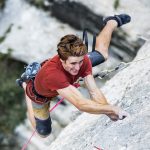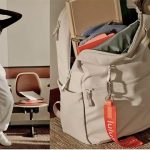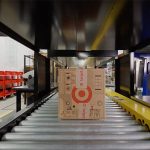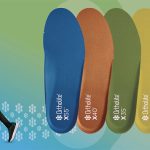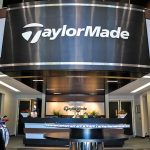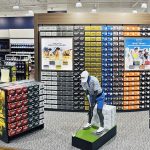Compass Diversified (CODI) reported BOA, Marucci Sports and 5.11 all delivered healthy double-digit sales growth in the third quarter. Primaloft saw flattish growth on a pro-forma basis while Velocity Outdoor’s sales were down slightly.
BOA’s Sales Jump 26.6 Percent
BOA’s sales climbed 26.6 percent in the quarter to $50.0 million as compared to $39.5 million a year ago. The increase was reflected across key industries including Snow Sports, Outdoor, Athletic, and Workwear. The three factors impacting their growth rates were market share gains, increased consumer participation as well as accelerated production ordering by BOA’s customers due to longer lead times resulting from overall global supply chain constraints.
Operating profit came to $13.0 million, a gain of 83.1 percent from $7.1 million a year ago. Gross margins were down slightly to 59.7 percent from 60.6 percent due to product mix. SG&A expenses were reduced to 25.4 percent of sales compared to 32.1 percent year over year as increased headcount and marketing investments were offset by $1.1 million in integration services fees paid to CGM (Compass Management Group) that did not recur in the current quarter.
For the year-to-date period, BOA’s revenues increased by 38.5 percent and EBITDA by close to 50 percent from the same period last year.
Pat Maciariello, CODI’s COO, said on an analyst call, “In the fourth quarter, we expect BOA to be approximately flat to last year as the company comps against a very strong Q4 2021. However, we want to recognize that the full year of 2022 has been an exceptional year of growth and our second full year of partnering with the company. We remain enthusiastic about BOA’s expansion into adjacent categories and believe the company will continue to gain market penetration in the years ahead.”
Primaloft Delivers Flattish Growth
Primaloft, acquired in July 2022, had pro-forma sales in the quarter of $13.0 million against $12.9 million a year ago.
Segment operating loss was $7.9 million compared to a loss of $100,000 a year ago.
The higher loss reflects a reduction in gross margin to 55.2 percent from 62.1 percent a year ago. In the latest quarter, PrimaLoft recorded $600,000 in amortization of the inventory step-up resulting from the acquisition purchase price allocation. Excluding the effect of the step-up amortization, gross margins would have been 60.0 percent. The margin decline primarily reflects an increase in input costs ahead of price increases.
SG&A expenses were 82.7 percent of Primaloft’s sales compared to 29.3 percent a year ago. The current quarter includes $5.8 million of transaction costs related to the acquisition and $1.1 million in integration services fees. EBITDA was approximately flat with 2021 levels after adjustments.
For the year-to-date period, pro-forma revenue and EBITDA increased by 25.8 percent and 33 percent respectively at Primaloft.
Maciariello said, “Due to the seasonal nature of PrimaLoft’s outerwear-driven business, the second half of the year typically accounts for less than a third of full-year EBITDA. Booking in quoting trends are solid heading into 2023 and we remain pleased with the PrimaLoft acquisition and optimistic that they will continue to take market share.”
Marucci’s Sales Surge 71 Percent
Marucci’s sales in the third quarter jumped 71.2 percent to $42.8 million from $25.0 million a year ago. The increase was primarily due to Marucci’s successful launch of its CatX bat line in August. Additionally, the increase is attributable to Marucci’s acquisition of Lizard Skins in October 2021, as well as increased customer demand and market share in many of Marucci’s key product lines, including aluminum and wood bats, and batting gloves.
Operating income at Marucci soared 114 percent to $7.7 million from $3.6 million for the same period in 2021. Gross margin improved to 58.2 percent from 56.8 percent primarily due to adjustments to the Lizards Skins’ inventory purchase price allocation. SG&A expenses were reduced to 33.0 percent of sales from 35.3 percent as a result of sale leverage against increases in credit card expenses, royalties, commissions, business development fees, and higher marketing and personal costs.
For the year-to-date September period, Marucci’s revenue and EBITDA grew by 41.9 percent and 13.2 percent respectively.
Maciariello said on Marucci, “Margins improved in the quarter as the supply chain related to the issues we experienced in the first half of the year began to somewhat dissipate. Marucci is also having early success entering several new markets, including fielding gloves and fast-pitch softball, and we are confident these adjacent categories will be drivers of further growth.”
5.11’s Sales Expand 14 Percent
At 5.11, the tactical gear brand, sales were $126.5 million in the third quarter, up 13.9 percent. This increase is due in part to a $6.9 million, or 14.5 percent, increase in direct-to-consumer (DTC) sales largely due to growth in retail store count, as well as an increase in comparable store sales. Additionally, the increase in sales was driven by a $4.4 million, or 10.9 percent, increase in domestic wholesale sales, in part a result of backorder fulfillment and strong demand, as well as an increase of $4.3 million, or 20 percent, in international channel sales due to inventory availability and strong demand, particularly in Europe and Mexico.
Operating profits improved 19.8 percent to $12.1 million from $10.1 million a year ago. Gross margins were down slightly, to 53.1 percent from 53.4 percent as price increases were offset by continued increases in inbound ocean and air freight charges during the period due to logistic challenges, which are expected to moderate during the remainder of the year. SG&A expenses were reduced to 41.6 percent of sales from 42.1 percent due to sales leverage.
For the year-to-date period, 5.11’s revenue and EBITDA grew by 9.2 percent and 3.4 percent, respectively. Maciariello said about 5.11, “Despite the headwinds in the industries, 5.11 continued to grow in a third quarter and its direct-to-consumer comps remained meaningfully positive. We continue to be excited by the brand’s potential and believe the business remains well positioned for continued growth.”
Velocity Outdoor’s Sales Slip 1.8 Percent
Velocity Outdoor, which includes the Crosman, Benjamin, Ravin, LaserMax, and CenterPoint brands in the airguns and archery space, generated sales of $75.5 million in the quarter, down 1.8 percent year over year. The decrease is primarily due to inflationary pressures impacting the demand for airgun products partially offset by new archery product releases.
Segment operating income was $10.2 million, down 20.9 percent from $12.9 million a year ago. Gross margin eroded to 29.6 percent from 33.1 percent last year. SG&A expenses were reduced to 12.7 percent of sales compared to 13.2 percent a year ago due in part to continued cost management. For the nine-month period, sales were down 12.2 percent and operating income fell 43.3 percent.
CODI’s Guidance Raised For Year
CODI’s businesses also include Advanced Circuits, Arnold Magnetic Technologies, Ergobaby, Foam Fabricators, Lugano Diamonds, and Sterno.
The company’s overall net sales were up 22 percent to $597.6 million, and up 15 percent on a pro forma basis (assuming CODI had acquired Lugano and PrimaLoft on January 1, 2021).
Net income was down to $2.6 million versus $90.2 million in the elevated year-ago period, primarily a result of the $72.7 million gain on the sale of Liberty Safe in August 2021. Adjusted earnings were up 28 percent to $46.0 million with adjusted EBITDA climbing 27 percent to $98.3 million.
As a result of CODI’s strong financial performance in the third quarter and expectations going forward, the company is raising its outlook for the year. Adjusted EBITDA for the full year is projected between $460 million and $470 million, up from a range of $445 million and $470 million given when second-quarter results were reported and up from guidance in the range of $400 million and $420 million set at the start of the year.
Photo courtesy 5.11 Tactical





